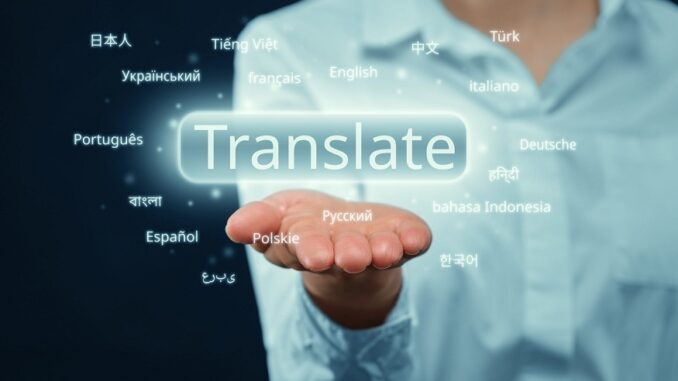
Translating written text or speech from one language into another is called translation services. Individuals, businesses, and online platforms can all provide translation services, which can be used for a variety of purposes, including:
- Translation services are frequently used in the business and trade sectors. Companies may need to translate documents, presentations, websites, or other materials into different languages to reach a global audience.
- Legal and official documents: Language translation can also be used for legal and official documents, such as contracts, certificates, and government documents, to ensure that all parties understand them correctly.
- Translation services are also used in the literary and entertainment industries to translate books, movies, and other media into different languages to reach a larger audience.
- Healthcare: Translation services can be used in the healthcare industry to text translate medical documents, patient information, and educational materials into different languages, ensuring that all patients, regardless of language ability, receive quality care.
Professional translators are fluent in both the source and target languages and understand the cultural nuances and differences between the languages can provide translation services. Machine translation algorithms can also provide translation services by translating text or speech using natural language processing and machine learning techniques. However, machine translation accuracy varies and may not always give an accurate or culturally appropriate translation.
How does it work?
The process of translation services typically involves the following steps:
- Source text analysis: The first step in the translation process is to analyze the source text, which is the text or speech that needs to be translated. This analysis includes understanding the text’s context, purpose, and audience, as well as any requirements or constraints for the translation.
- Translation: The process begins with the source text being translated into the target language. A professional human translator who is fluent in both the source and target languages or a machine translation algorithm can do this.
- Review and editing: Once completed, the translation is usually reviewed and edited by a professional human translator to ensure accuracy, clarity, and consistency. The translator also double-checks the translation for cultural relevance and appropriateness, and makes any necessary changes to ensure that the original text’s meaning and tone are preserved.
- Quality assurance: Before delivering the final version of the translation, it is subjected to a quality assurance review in which it is checked for accuracy, grammar, and consistency, and any necessary revisions are made.
- Finally, the client receives the final translation in the desired format, such as a printed document, a digital file, or a web page.
The steps involved in the translation process may differ depending on the text type, the target language, and the client’s needs. The overall process typically entails analyzing the source text, translating the text, reviewing and editing the translation, performing quality assurance, and delivering the final product to the client.
A voice translator can be useful when traveling abroad and needing to communicate with people who speak a different language or when conducting business meetings with people who speak a different language,
Bottomline
Translation services are important for promoting global trade, cultural exchange, and understanding by facilitating communication and understanding between individuals and organizations that speak different languages.

Leave a Reply